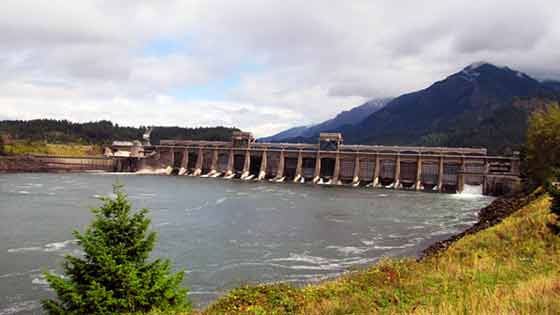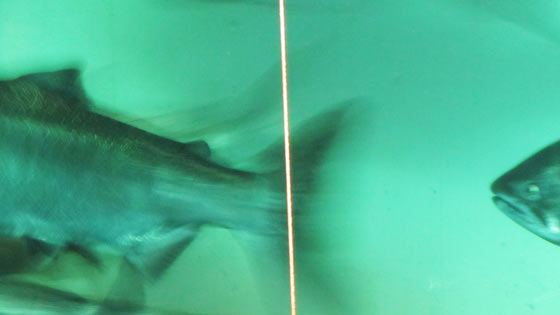2013 marks a record year for the Chinook (King) salmon runs on the Columbia River. Over 1 million salmon have passed through the Bonneville Dam located near the mouth of the Columbia River. Historically, the Fall Chinook run is the biggest single run of the year far exceeding the Spring and Summer season runs. In addition this Fall, 68,000 fish passed through the dam in a single day. According to Ben Hausmann, senior fish biologist for the Army Corp of Engineers at the Bonneville Dam, that is the highest daily run count since they began counting fish.

The Bonneville Dam was built in 1938, and from its inception, fish passage was one of its original concerns. As you see in the video, the fish ladders provide a safe navigational passage through the dam for the adult salmon. There are two main ladders, one on the Washington side with the newer Powerhouse 2, and the other on the Oregon side, with Powerhouse 1. Whichever entrance the fish encounter, there is a spillway that was added to provide better passage for the juvenile fish.
Originally, the spillway was was added to provide flood control. As fish passage became more of a concern over time, especially for the juveniles, the dam now spills only to improve fish passage. By August 31, most of the spill that occurs during the Spring season officially ends, regardless of excess water levels. According to Hausmann, by then, the vast majority of the juveniles have already navigated through the dam.
So why the banner year for Chinook?
Hausmann points to a number of factors, including the year the salmon went out as juveniles, and the water flow levels that enabled them to go quickly through the spillways. “You know this was a perfect storm of good conditions. You couple that with good ocean conditions, and the improvements we’ve made at the dams and operationally what we’re able to do, that’s kind of the suite of things that makes for a success story”, says Ben Hausmann.

